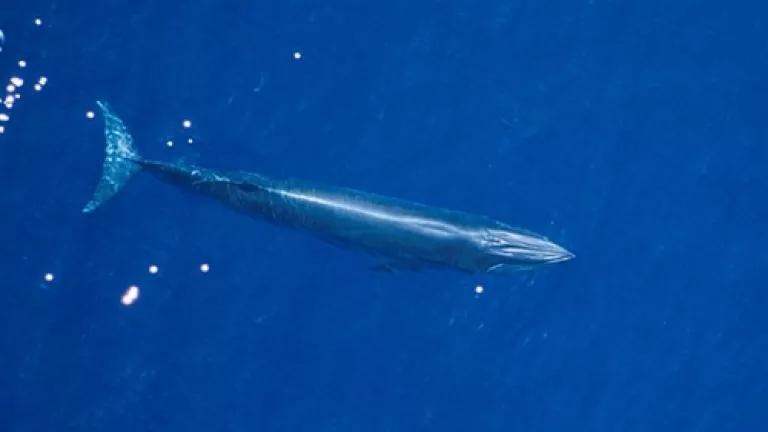
Until recently, scientists recognized just two subspecies of Bryde’s whales (pronounced Broo-dus) worldwide – the Eden form and the Bryde’s form. The 30- to 50-feet baleen whales (the kind that filter food like plankton and krill through tiny hairs in their mouth, as compared to toothed whales that bite their prey, such as fish, for food) are found in warm waters of the Indian, Pacific, and Atlantic oceans – including a small population found in the Gulf of Mexico. But a recent genetic analysis revealed that this population in the Gulf is as genetically distinct as the currently recognized subspecies. In fact, the Gulf of Mexico population is even as distinct as some entire recognized species (as opposed to just subspecies) of whales, indicating that this population is highly unique and should be evaluated for whether it constitutes its own species.
What’s interesting about this finding is that the whales from this small population in the Gulf – which number less than 50 individuals – are the only known members of this genetically distinct lineage. Recent studies suggest that they also have a unique sound to their call that is distinct from other Bryde’s whales and their body size seems intermediate to the two other described subspecies.
In addition to being evolutionarily unique, the Gulf population of Bryde’s whales also demonstrates low genetic diversity, suggesting that it has been isolated from any other Bryde’s whales for a long time. There is some historical data to suggest that the whales used to have a larger distribution in the Gulf, but they now appear limited to a very specific area of the northern part near the Florida Panhandle. The small population size, limited range, and low genetic diversity of this evolutionarily distinct whale raise obvious conservation concerns for this population.
As the only resident baleen whale in the Gulf of Mexico, they serve a unique ecological niche in the Gulf. And with the additional pressures that these whales are experiencing there – including threats of death and serious injury from colliding with ships and vessels, the persistent acoustic bombardment from intensive oil and gas exploration and commercial shipping, bioaccumulation of persistent organic pollutants, and the long-term effects of the Deepwater Horizon spill – there is no doubt that this unique population of whales is in danger of extinction.
Given the unique nature of these Bryde’s whales in the Gulf, we should protect this population now.

